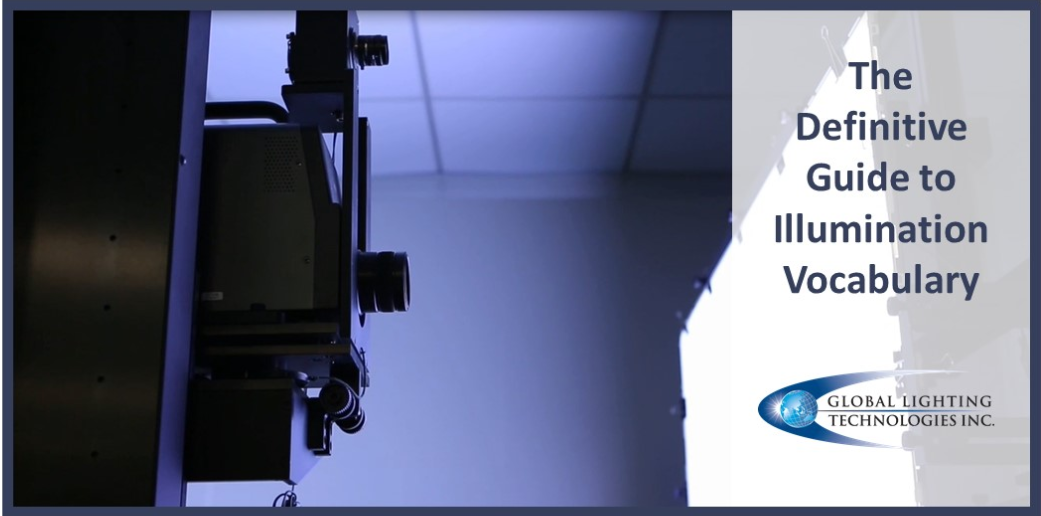
The lighting industry is full of terms, phrases and lingo that isn’t easy to understand, even for seasoned professionals. Here is our guide to help you understand and translate lighting terminology.
Knowing the proper illumination vocabulary is important. In different industries the measure of light (whether on the surface or some distance away) is dependent on the application and lighting standards that are tied in with those applications. When starting on a new project, it is imperative to know your customers target “brightness” and uniformity. When we say brightness, we need to understand whether it’s luminance or illuminance measurements. Illuminance is the amount of light falling on a surface. So, the illuminance changes depending on the distance between the object and the source of light or the area covered by the light. Luminance, however, is the measure of the light being emitted from the surface. While a TV manufacturer cares more about the amount of light coming off their display (luminance), a General Lighting manufacturer cares more about how much light reaches the ground or someone’s desk in an office. Knowing the difference between these measurements is imperative, especially when working towards industry standards (general lighting, automotive, white goods, etc.).
A few key terms or topics of discussion that come to mind when talking about lighting include:
Luminance vs. Illuminance –
- Luminance is the amount of light emitting from or passing through a surface within a given angle.
- For example, in the lightguide industry, we would measure the amount of light coming off a display (TV, Computer Screen, Cell Phone) in candelas/meter squared (cd/m2), which is the SI unit for luminance.
- The common non-SI name used by professionals in the industry is “nit”.
- Illuminance is the amount of light that “illuminates” a surface.
- In our industry for example we would measure the amount of light that reaches our desk from the ceiling in “lux” or lumens/square meter (lm/m2), which is the SI unit for illuminance.
Luminous Flux is the measure of the perceived power of light.
- In our industry for example we would measure the amount of “light” from a light bulb or an LED in “lumens”, which is the SI unit for luminous flux.
Uniformity in our industry is typically a measurement of the minimum luminance divided by the maximum luminance from the surface of a lightguide.
- In simpler terms, we take the dimmest spot from the illuminated surface and divide it by the “brightest” spot from the illuminated surface to get a ratio or percentage.
- The higher the uniformity the more “even” the light looks across the surface.
The more one uses these terms and reads about lighting, the more familiar they will become with the vocabulary. Have questions or concerns? Global Lighting Technologies is your go-to expert for all your illumination needs!